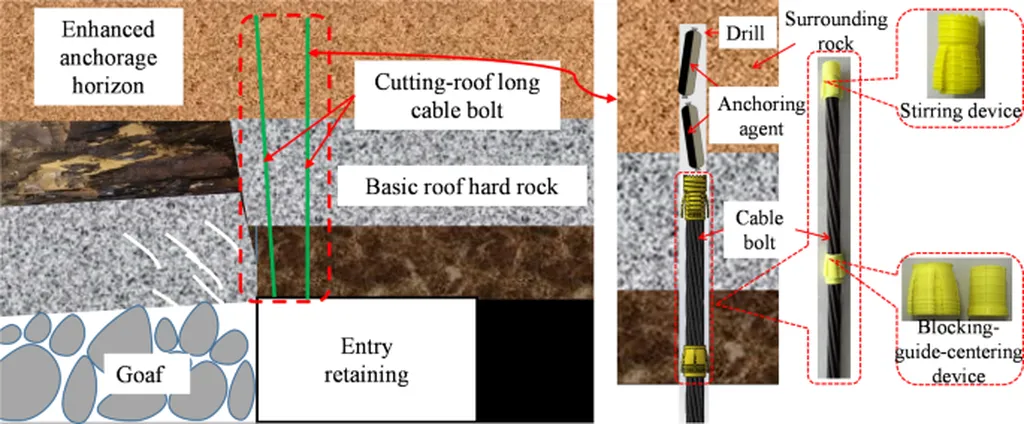In the heart of China’s coal mining industry, a groundbreaking study led by Dong Zhang from the School of Mines at China University of Mining and Technology in Xuzhou is set to revolutionize the way we approach gob-side entry retaining (GER). The research, published in the *International Journal of Mining Science and Technology* (known in English as *International Journal of Mining Science and Technology*), delves into the stability mechanism of GER with a coal pillar-backfill body (CPBB) system under dynamic overburden load—a critical yet unexplored area until now.
Zhang and his team have established a voussoir beam structure (VBS) model to analyze roof structure stability during panel advancement. This model introduces a novel VBS stability criterion, providing a fresh perspective on the factors influencing GER stability. “By reducing the length of block B and the immediate roof damage variable D, and increasing the coal pillar width, we can significantly lower the risk of GER structure instability,” Zhang explains. This finding alone could reshape the design and implementation of GER systems, potentially saving millions in maintenance and repair costs for mining operations.
The study also explores the impact of reducing the length of block B and the GER width on the stability of the CPBB system. Using a UDEC model, the team systematically investigated how these parameters, along with the backfill body width and strength, affect the stability and coupling performance of the CPBB system. The results are promising. “At a block B length of 14 meters, a backfill body width of 2.0 meters, and a water-cement ratio of 1.5:1, the coal pillar and backfill body exhibit similar crack damage but maintain stability,” Zhang reveals. This balance results in an optimal coupling degree for the CPBB system, a critical factor for long-term stability and safety.
The practical implications of this research are immense. A novel GER method supported by the CPBB system was implemented on-site, with monitoring results indicating peak stresses of 19.17 MPa ahead of the coal pillar, 16.14 MPa behind, and a maximum backfill body stress of 12.27 MPa. The floor heave was measured at 380 mm, with a 103 mm backfill body rib. These findings not only validate the theoretical models but also demonstrate the real-world applicability of the CPBB system.
The energy sector stands to gain significantly from this research. As mining operations strive for greater efficiency and safety, the insights provided by Zhang and his team could lead to more stable and cost-effective GER systems. This, in turn, could enhance the overall productivity and sustainability of coal mining operations, a critical component of the global energy mix.
Looking ahead, this research paves the way for further developments in the field. As Zhang notes, “Our findings provide a solid foundation for future studies on the stability and coupling performance of GER systems.” The potential for innovation is vast, and the mining industry is poised to benefit from these advancements.
In the ever-evolving landscape of mining technology, Zhang’s work serves as a beacon of progress. As the industry continues to push the boundaries of what’s possible, this research stands as a testament to the power of innovation and the pursuit of excellence. The journey towards safer, more efficient mining operations has taken a significant step forward, thanks to the groundbreaking work of Dong Zhang and his team.

